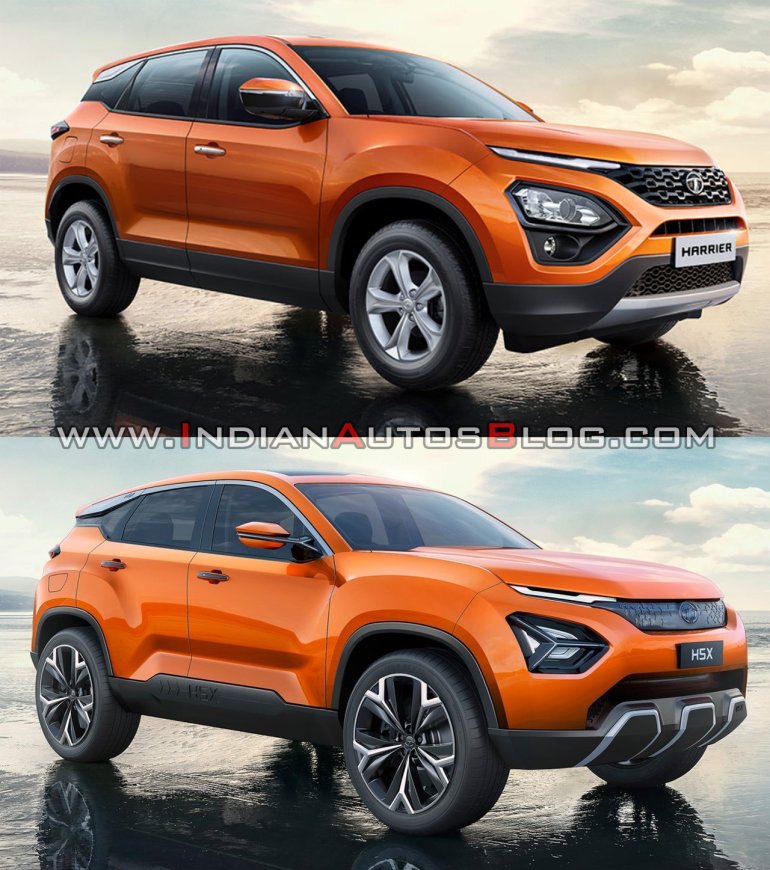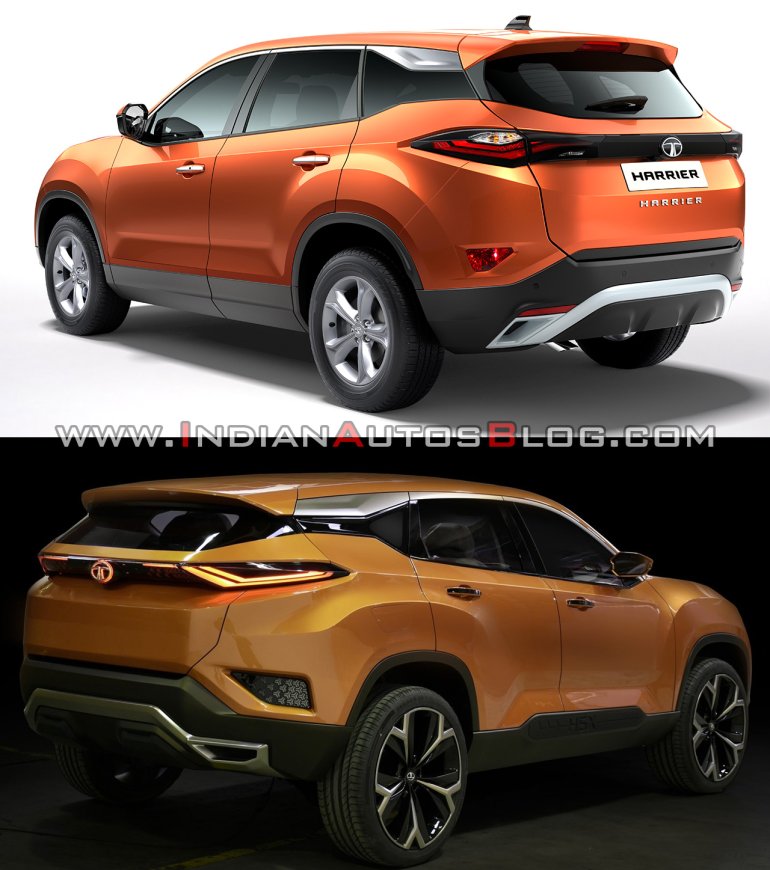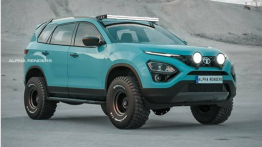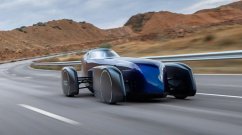The Tata Harrier is the production avatar of the Tata H5X concept and our visual comparison of the concept and the final product captures its transition.
While not taking anything away from it, the Harrier isn’t as sleek and as aggressive as the Tata H5X. The production version has a mellowed design that focuses more on practicality than the visual theatrics and meets a cost target to keep prices competitive. It has grille openings and a less imposing skid plate at the front. Also, in place of the tri-arrow pattern, there’s a dual-beam headlamp and a fog lamp, but their combined housing is of a similar shape.
Moving to the sides, where the concept had squarish fenders, the production version has rounded fenders. For obvious reasons, the greenhouse and ORVMs are bigger. 17- or 18-inch alloy wheels have replaced the 22-inch alloy wheels.
At the rear, the Harrier has a bigger backglass and tweaked lamps. It features low-set dedicated fog lamps too. The bumper design doesn’t differ as extensively as at the front.
Overall, the Tata Harrier isn't radically different from the forerunner. Design chief Pratap Bose had said at the concept's presentation that 80-85% of the design is going into production, and has delivered on that promise. The reactions to the design on social media are largely positive.
The Tata Harrier is the company’s first production model designed using the IMPACT 2.0 design language and based on a modified version of Jaguar Land Rover’s D8 platform. As for the specifications, the company has revealed only that the SUV employs an all-new 2.0-litre Kryotec diesel engine. This engine is a rebranded 2.0-litre MultiJet II unit made by FCA India, and it has a maximum power output of 140 PS. Transmission choices will include 6-speed manual and 6-speed automatic. The AT is Hyundai-made.
Also Read: Tata Tiago JTP & Tata Tigor JTP launched at INR 6.39 lakh & INR 7.49 lakh respectively
The Tata Harrier will go on sale in India in January 2019. Its OTR prices will range from INR 16-21 lakh.

















